Fwd Digital and Business Environment_MUZ 6 November 2023-R
docx
keyboard_arrow_up
School
Ashford University *
*We aren’t endorsed by this school
Course
AUDITING
Subject
Business
Date
Nov 24, 2024
Type
docx
Pages
16
Uploaded by EarlBookAlligator15
1
"Digital and Business Environment"
Name of Student
Professor Name
University Name
Submission Date
Table of Contents
2
Introduction
......................................................................................................................................
2
1.1.1 Mission Statement Analysis
............................................................................................
2
1.1.2. Objectives and Strategic Goals
.......................................................................................
2
1.1.3. Historical Milestones
......................................................................................................
3
1.2. Size and Type of the Company
.............................................................................................
3
1.3. Operational Sectors
...............................................................................................................
3
Environmental Analysis
...................................................................................................................
4
2.1. PESTEL Analysis
.....................................................................................................................
4
2.1.1. Political Factors
..................................................................................................................
4
2.1.2. Economic Factors
...............................................................................................................
4
2.1.3. Social Factors
.....................................................................................................................
4
2.1.4. Technological Factors
........................................................................................................
4
2.1.5. Environmental Factors
.......................................................................................................
5
2.1.6. Legal Factors
......................................................................................................................
5
2.2. Porter's Five Forces Analysis
....................................................................................................
6
2.2.1. Threat of New Entrants
......................................................................................................
6
2.2.2. Bargaining Power of Suppliers
..........................................................................................
6
2.2.3. Bargaining Power of Buyers
..............................................................................................
6
2.2.4. Threat of Substitutes
..........................................................................................................
6
2.3. Ansoff's Matrix Analysis
...........................................................................................................
7
2.3.1. Market Penetration
.............................................................................................................
7
2.3.2: Creation of New Products
..................................................................................................
7
2.3.3. Market Development
..........................................................................................................
7
2.3.4. Diversification
....................................................................................................................
7
2.4. SWOT Analysis
........................................................................................................................
7
3
2.4.1. Strengths
.............................................................................................................................
7
2.4.2. Weaknesses
.........................................................................................................................
7
2.4.4. Threats
................................................................................................................................
7
Conclusion and Recommendation
...................................................................................................
7
3.1. Key Findings Synopsis
..........................................................................................................
7
3.2. Possible Difficulties and Strategies for Mitigation
...............................................................
7
References
........................................................................................................................................
7
Your preview ends here
Eager to read complete document? Join bartleby learn and gain access to the full version
- Access to all documents
- Unlimited textbook solutions
- 24/7 expert homework help
4
Introduction
I.1
Company Overview: Mission, Objectives, and History
Toyota has adapted its goals in Dubai to accommodate the distinct needs of the local market
while staying true to its overarching worldwide purpose,
focusing on engaging and retaining
customers by offering high-quality products and services. Although this purpose is stated
concerning the American market, its core has been modified to resonate in the Dubai setting,
where excellent value and customer happiness are equally important. Toyota's goals in Dubai are
to lead the market, grow sustainably, and use cutting-edge technology to meet the needs of a
changing customer base
(Van Agtmael, 2007). Since its market entry into the Middle East,
Toyota has built a strong network of dealerships and servicing facilities, guaranteeing its
customers' accessibility and convenience (Womack and Jones, 2015). A thorough grasp of local
market dynamics and consumer preferences, such as the region's penchant for SUVs and luxury
cars, has been the driving force behind this expansion.
1.1.1 Mission Statement Analysis
When Toyota's mission statement is examined via the prism of its activities in Dubai, it is evident
that the company aligns with the goals of the local market. The focus on premium goods and a
fulfilling ownership experience appeals to Dubai's customers, who place a great value on
elegance and quality. The flexibility of Toyota's goal is essential to its success because it enables
the corporation to modify its strategy to satisfy unique local needs while upholding its global
standards. Given the prominence of technology developments and economic diversification
efforts in Dubai, Toyota's dedication to innovation is especially noteworthy. The company's
emphasis on fuel-efficient and hybrid cars is in line with the sustainability objectives of the
United Arab Emirates Vision (Chakraborty et al., 2022).
1.1.2. Objectives and Strategic Goals
Toyota's goals in Dubai reflect both its aspirations for the world and its reaction to the particular
opportunities and difficulties presented by the regional market. Leading the market in
sustainability is a key strategic objective that fits with Dubai's environmental stewardship
mission. In light of the emirate's expanding infrastructure for electric mobility, Toyota has been
5
actively marketing its hybrid and electric cars. By customizing its cars to meet the unique needs
of Dubai's varied customer base which includes everyone from luxury car lovers to companies
needing reliable vehicles for industrial and commercial use the company also hopes to become a
leader in innovation (Al Hashemi, 2016).
1.1.3. Historical Milestones
Toyota's experience in Dubai is evidence of its adaptability and progressive philosophy. The
company's history in the area spans several decades, with key turning points that have shaped its
esteemed standing in the industry. Over time, the business took advantage of Dubai's economic
booms, timing its expansion to coincide with significant turning points in the city's history,
including the booms in the building sector and the rise of the oil industry. The launch of Toyota's
luxury brand, Lexus, in the early 1990s marked a significant turning point in the company's
history in Dubai (Martínez, 2021). These achievements show not only how far Toyota has come,
but also how crucial a part Toyota has played in helping Dubai become a major international
center for travel and business.
1.2. Size and Type of the Company
The Dubai operation is a vertically integrated corporation, inheriting this style from its parent,
the global Toyota Motor Corporation. Because of this organizational structure, Toyota can
contribute significantly to the local economy by engaging in a wide range of related business
activities in addition to manufacturing automobiles. These activities include the manufacturing of
parts, financial services through its financing arm, and even technology research and
development.
1.3. Operational Sectors
Toyota works in many important automotive areas in Dubai. These include sales of new and used
cars, finance, parts and servicing, and possibly most importantly environmental programmers
that support Dubai's goal of becoming a green economy.With a lot of good
initiatives, Toyota
will be directly competing with other industry leaders who also want to take advantage of the
changing transportation and mobility demands in Dubai and the broader UAE market.
6
Environmental Analysis
2.1. PESTEL Analysis
2.1.1. Political Factors
Given Dubai's robust economic growth and impressive per capita income, Toyota finds itself in a
conducive environment to broaden its operational footprint.
In the United Arab Emirates (UAE),
Toyota benefits from a favorable fiscal environment, partly due to the implementation of
corporate considerations. However given Dubai's key location as a hub for re-exports, Toyota has
to negotiate the political complexities of import laws, automotive standards, and trade policies
(Doner et al., 2021)
. Political ties and trade agreements between the UAE and other countries
may also have an impact on Toyota's business practices, especially tariff policies that may have
an impact on car prices and competitiveness. Furthermore, Toyota must modify its product lineup
to satisfy the growing market for ecologically friendly automobiles as a result of the
government's push for sustainability through programs like Dubai's Green Mobility Strategy
(Onat et al., 2019).
2.1.2. Economic Factors
The economy of Dubai, with its high growth rate and per capita income, offers Toyota a
favorable environment in which to expand its operations. The Emirate's strong financial system
and status as a hub for regional commerce increase consumer spending power, which is good
news for car sales. Additionally, the automobile industry as a whole is benefiting from the
economic diversification initiatives, which are creating prospects outside of the oil sector (Callen
et al., 2014). However, given that the UAE Dirham is fixed to the US dollar, Toyota has
economic difficulties, including exchange rate swings that may affect pricing and import
expenses. The business must also remain aware of changes in gasoline prices and how they affect
consumer preferences for cars, particularly in areas where there is a regional shift towards larger,
more fuel-hungry vehicles.
Your preview ends here
Eager to read complete document? Join bartleby learn and gain access to the full version
- Access to all documents
- Unlimited textbook solutions
- 24/7 expert homework help
7
2.1.3. Social Factors
Social changes in Dubai have a big impact on how consumers behave while buying cars. The
diverse population of the city creates a demand for a range of car types, from luxury autos to
useful versions ideal for families living abroad. Social issues like the rise in female employment
also allow Toyota to enter new markets because there is a growing need for safe, family-friendly
cars. Social expectations and conventions, though, might often present difficulties. For instance,
particular populations' preference for luxury cars, the popularity of car leasing over ownership,
and the desire for fuel-efficient cars could all have an impact on Toyota's marketing and product
strategy in Dubai (Piercy, 2016). If the company wants to stay in the market and expand, it needs
to adjust to these societal nuances.
2.1.4. Technological Factors
The flourishing technology scene in Dubai offers Toyota a distinctive setting. Toyota's advances
in linked automobiles and autonomous driving technologies are in line with the city's quest for
smart infrastructure and the integration of IoT devices. Furthermore, the market for Toyota's
electric and hybrid cars is strengthened by Dubai's dedication to sustainability and is assisted by
an expanding network of charging stations (Ajel, 2023). However, there are drawbacks to this
widespread use of technology. To be competitive, one must continually spend on R&D due to the
quick speed of innovation.
2.1.5. Environmental Factors
Environmental considerations have a big influence on car operations in Dubai. Because of the
extreme weather in the Emirate, cars need to have strong cooling systems, which has an impact
on Toyota's product changes. Furthermore, Dubai's focus on lowering carbon emissions
corresponds with Toyota's creation of low-emission cars, opening doors for the company to take
the lead in the market for environmentally friendly car options. Strategic programs in Dubai,
such as the "Dubai Clean Energy Strategy 2050," encourage sustainability and renewable energy,
which may raise interest in Toyota's hybrid and electric vehicles (Sindi et al., 2021). On the other
hand, because emissions criteria must be met, environmental protection legislation may result in
higher operating expenses.
8
2.1.6. Legal Factors
For Toyota to operate in Dubai, legal considerations are essential. Strict compliance with
regulations about consumer protection, emissions, and vehicle safety is mandated under the
regulatory framework of the Emirate. Toyota cannot function or sell in the market unless these
rules are followed. For instance, Dubai has strict vehicle standards and traffic restrictions, so
Toyota must make sure all of its cars comply with local requirements to avoid fines. The UAE's
regulations about intellectual property have an impact on how Toyota defends its technologies
and handles competition.
2.2. Porter's Five Forces Analysis
2.2.1. Threat of New Entrants
The automotive industry in Dubai is characterized by high entry barriers due to significant
capital investment, economies of scale, and brand loyalty factors. For Toyota, the threat of new
entrants is moderated by its established brand presence, extensive dealer network, and customer
trust built over the years. However, emerging electric vehicle (EV) makers and innovative
mobility solutions could pose potential threats as the industry evolves towards sustainability.
2.2.2. Bargaining Power of Suppliers
Toyota’s bargaining power with suppliers is strong due to its large scale of operations and global
procurement strategy. The company's Toyota Production System (TPS) allows for efficiency and
flexibility in dealing with suppliers. However, the dependency on specialized components for
hybrid and electric vehicles could potentially increase supplier bargaining power.
Compliance with these regulations is essential for Toyota to operate and sell in the market
(Debnath, 2015). For example, Dubai’s traffic laws and vehicle standards are stringent,
necessitating that Toyota ensure all their vehicles meet local regulations to avoid penalties.
Intellectual property laws in the UAE also affect how Toyota protects its innovations and
responds to competition. Moreover, the UAE's labor laws impact how Toyota recruits and
manages its workforce, with implications for operations and costs. The legal landscape around
import tariffs and trade agreements, particularly in the context of the Gulf Cooperation Council
9
(GCC), will influence Toyota's pricing strategies and competitiveness in the region.
The global
sales for Toyota, including its truck unit Hino Motors and small-car maker Daihatsu, slightly
decreased by 0.1%. However, record overseas sales of 8.6 million vehicles helped offset a 9.6%
decrease in its home market sales to 1.9 million units (Reuters, 2023).
2.2.3. Bargaining Power of Buyers
Due to the abundance of options, competitive dealerships, and informational resources, buyers in
Dubai have significant bargaining power. Customers in Toyota's market are price-sensitive and
well-informed, which frequently results in increased expectations and the opportunity for buyers
to haggle. Toyota's reputation for quality and dependability, which can lower price elasticity and
increase customer loyalty, serves to partially offset this influence
(Golara et al., 2021)
.
2.2.4. Threat of Substitutes
Public transportation, other private transportation choices including ride-sharing services, and the
growing appeal of other brands' EVs and hybrid cars pose a threat to Toyota's market share in
Dubai. Despite Dubai's large public transport network, owning a personal vehicle is still a
prestige symbol and a practical choice, which lowers the threat level (Alotaibi, 2017). On the
other hand, shifting consumer preferences towards eco-friendly cars and innovative
transportation alternatives may make this issue more serious.
2.3. Ansoff's Matrix Analysis
2.3.1. Market Penetration
Toyota's strategy objectives aimed at expanding its market share within the current automobile
industry are reflected in its market penetration in Dubai. Through active marketing campaigns,
competitive pricing methods, and a strong dealership network, Toyota hopes to increase its sales
and market share by capitalizing on its reputation for dependability and value for money.
Your preview ends here
Eager to read complete document? Join bartleby learn and gain access to the full version
- Access to all documents
- Unlimited textbook solutions
- 24/7 expert homework help
10
2.3.2: Creation of New Products
Within the Toyota context, product development entails innovation and the launch of new goods
specifically designed to satisfy the demands of the Dubai market (Kotler et al., 2015). This
involves investing in hybrid and electric vehicles to comply with the region's growing
environmental restrictions and concerns, as well as developing new models that satisfy the local
preference for high-performance and luxury automobiles.
2.3.3. Market Development
Market development for Toyota in Dubai might entail reaching out to new client demographics
or extending into previously untapped regions. This can entail tactics like providing cars that are
tailored to the requirements of companies or looking into potential in nearby Emirates where
Toyota's presence would be less crowded. In keeping with the surge in travel to Dubai, Toyota
might concentrate on forming alliances with ride-sharing and rental companies to broaden its
brand awareness and customer base.
2.3.4. Diversification
Toyota may need to look into new business ventures outside of traditional auto manufacturing
and sales to diversify its operations in Dubai. This can entail making investments in cutting-edge
technology that are suited to the particular requirements of the UAE market, including the
manufacturing of electric vehicles or autonomous driving systems. Furthermore, Toyota may
think about service-oriented diversification, including financial services for auto loans, mobility
solutions, or even forming strategic alliances with energy companies to build infrastructure for a
new line of automobiles. This would support Dubai's innovation-driven economy while
simultaneously acting as a buffer against market volatility (Jeong, 2020).
2.4. SWOT Analysis
2.4.1. Strengths
Toyota's strong brand recognition, which stands for dependability and quality, is what defines its
advantages in the Dubai market. A robust after-sales service architecture and a robust distribution
11
network support this. Cost advantages result from the company's vast experience with lean
manufacturing and economies of scale. Furthermore, Toyota's understanding of worldwide
supply chains enables effective operations and flexibility in response to market demands.
Toyota's diverse portfolio, encompassing a spectrum of vehicles from luxury to economy, places
the company well to accommodate a wide range of consumer preferences in Dubai's competitive
automotive business (Martínez, 2021).
2.4.2. Weaknesses
Toyota has difficulties in Dubai, including its reliance on international supply networks that are
subject to geopolitical upheavals that could impair local availability. Although a strength, its
wide range of products can sometimes weaken brand identification and complicate inventory
management. Toyota faces competition from premium brands that are perceived as more
luxurious in the luxury vehicle market (Shah, 2018). Additionally, the company's dedication to
innovation demands ongoing large investment, which could put a burden on financial resources,
especially in fast-moving markets like Dubai where customer preferences are always changing.
2.4.4. Threats
Threats to Toyota's automotive business in Dubai include growing rivalry from both long-
standing competitors and recent newcomers, particularly in the electric vehicle market
(Solesbury, 2021). The entire automotive industry can be unexpectedly impacted by fluctuations
in oil prices. Significant adjustments to operations and product lines may be necessary as a result
of regulatory reforms towards sustainability. Additionally, if any worldwide recalls or flaws are
made public, the brand may be exposed to reputational concerns that could be exacerbated by the
quick dissemination of information on social media.
Conclusion and Recommendation
3.1. Key Findings Synopsis
Many important conclusions have been drawn from the examination of Toyota's operations in
Dubai. A corporate environment formed by political stability, economic growth, and a supportive
12
legal framework is highlighted by the PESTEL and Porter's Five Forces analysis. The necessity
to follow strict environmental standards and growing competition, particularly in the electric
vehicle market, are among the threats noted. The SWOT analysis highlights Toyota's strong
points, such as its excellent supply chain and brand recognition, while also pointing out its
vulnerabilities, like its less dominant position in the electric car market.
3.2. Possible Difficulties and Strategies for Mitigation
Rapid technical advancement, shifting consumer preferences, and new governmental
requirements are examples of potential obstacles. To lessen these, stay ahead of technological
breakthroughs, Toyota ought to set up a special innovation hub in Dubai. It is possible to satisfy
client preferences by staying customer-focused and promptly responding to market demands.
Lastly, investments in compliance infrastructures and proactive interaction with lawmakers are
required in light of regulatory developments.
Your preview ends here
Eager to read complete document? Join bartleby learn and gain access to the full version
- Access to all documents
- Unlimited textbook solutions
- 24/7 expert homework help
13
References
AJEL, K. 2023.
Electric cars in the Gulf Area an investment market and challenges to spread.
Wien.
https://repositum.tuwien.at/handle/20.500.12708/175663
AL HASHEMI, H. 2016. Pathways to diversification.
https://dspace.lib.cranfield.ac.uk/handle/1826/11694
ALOTAIBI, O. 2017.
Potential demand for public transport in Riyadh City, Saudi Arabia.
Cardiff University.
https://orca.cardiff.ac.uk/id/eprint/106339/
ALSULTAN, S. K. 2021. Tax Incentives in Three Common Markets.
Ga. J. Int'l & Comp. L.,
50
,
441.
https://heinonline.org/hol-cgi-bin/get_pdf.cgi?handle=hein.journals/gjicl50§ion=17
CALLEN, M. T., CHERIF, R., HASANOV, F., HEGAZY, M. A. & KHANDELWAL, P. 2014.
Economic diversification in the GCC: Past, present, and future
, International Monetary
Fund.
https://books.google.com/books?
hl=en&lr=&id=6qUZEAAAQBAJ&oi=fnd&pg=PA4&dq=CALLEN,+M.+T.,+CHERIF,
+R.,+HASANOV,+F.,+HEGAZY,+M.+A.+%26+KHANDELWAL,+P.
+2014.+Economic+diversification+in+the+GCC:+Past,+present,+and+future,
+International+Monetary+Fund.&ots=_HZmX8BRYq&sig=7BSAu2kXcHnwCZDuak4Y
SmrEH9Q
CHAKRABORTY, S., DASH, S. K., ELAVARASAN, R. M., KAUR, A., ELANGOVAN, D.,
MERAJ, S. T., KASINATHAN, P. & SAID, Z. 2022. Hydrogen energy as future of
sustainable mobility.
Frontiers in Energy Research,
10
,
893475.
https://www.frontiersin.org/articles/10.3389/fenrg.2022.893475/full
DEBNATH, S. C. 2015. Environmental regulations become restriction or a cause for innovation–
a case study of Toyota Prius and Nissan Leaf.
Procedia-Social and Behavioral Sciences,
195
,
324-333.
https://www.sciencedirect.com/science/article/pii/S1877042815038392
14
DONER, R. F., NOBLE, G. W. & RAVENHILL, J. 2021.
The political economy of automotive
industrialization in East Asia
, Oxford University Press.
https://books.google.com/books?
hl=en&lr=&id=XBklEAAAQBAJ&oi=fnd&pg=PP1&dq=DONER,+R.+F.,+NOBLE,+G.
+W.+%26+RAVENHILL,+J.
+2021.+The+political+economy+of+automotive+industrialization+in+East+Asia,
+Oxford+University+Press.&ots=oY5p6ADxo_&sig=F6c6OAueGWPpTPzsX_LLykPZ
WPo
GOLARA, S., DOOLEY, K. J. & MOUSAVI, N. 2021. Are dealers still relevant? How dealer
service quality impacts manufacturer success.
Production and Operations Management,
30
,
3560-3578.
https://onlinelibrary.wiley.com/doi/abs/10.1111/poms.13450
JEONG, H. W. 2020. Between Economic Diversification and Nation-Branding: The UAE's Pivot
to Asia and Innovation Strategies in the Post-Zayed Era.
Journal of Global South Studies,
37
,
181-208.
https://muse.jhu.edu/pub/227/article/784199/summary
KOTLER, P., BURTON, S., DEANS, K., BROWN, L. & ARMSTRONG, G. 2015.
Marketing
,
Pearson Higher Education AU.
https://books.google.com/books?
hl=en&lr=&id=8TjiBAAAQBAJ&oi=fnd&pg=PP1&dq=KOTLER,+P.,+BURTON,+S.,
+DEANS,+K.,+BROWN,+L.+%26+ARMSTRONG,+G.+2015.+Marketing,
+Pearson+Higher+Education+AU.&ots=jg7vjOA5g3&sig=TweINbAKHQvsZ-
QTfVUDWSc1NyA
LIPTOW, J. 2021.
Alter-Expo: Expo 2020 and the Future of International Expositions.
Kent
State University.
https://rave.ohiolink.edu/etdc/view?acc_num=ksuhonors1620684116282735
MARTÍNEZ, I. 2021.
The Future of the Automotive Industry
, Springer.
https://link.springer.com/content/pdf/10.1007/978-1-4842-7026-4.pdf
ONAT, N. C., KUCUKVAR, M., ABOUSHAQRAH, N. N. & JABBAR, R. 2019. How
sustainable is electric mobility? A comprehensive sustainability assessment approach for
the case of Qatar.
Applied Energy,
250
,
461-477.
15
https://www.sciencedirect.com/science/article/pii/S0306261919309304
PIERCY, N. F. 2016.
Market-led strategic change: Transforming the process of going to market
,
Taylor & Francis.
https://books.google.com/books?
hl=en&lr=&id=MTIlDwAAQBAJ&oi=fnd&pg=PP1&dq=PIERCY,+N.+F.
+2016.+Market-led+strategic+change:+Transforming+the+process+of+going+to+market,
+Taylor+%26+Francis.&ots=Tx96QKS6zU&sig=tFy5jxOirGlWd0G5W_B3e-hslVY
REUTERS. 2023.
Toyota defends title as world's top-selling automaker in 2022
[Online].
Available:
https://www.reuters.com/business/autos-transportation/toyota-defends-title-
worlds-top-selling-automaker-2022-2023-01-30/
[Accessed].
SHAH, A. 2018. Does Upward Product Line Extension Hurt or Benefit a Firm's Competitive
Advantage? The Case of Honda's Acura, Nissan's Infiniti, and Toyota's Lexus Brands.
Journal of Marketing Development and Competitiveness,
12
,
28-36.
http://t.www.na-businesspress.com/JMDC/JMDC12-1/ShahA_12_1.pdf
SINDI, H. F., UL-HAQ, A., HASSAN, M. S., IQBAL, A. & JALAL, M. 2021. Penetration of
electric vehicles in gulf region and its influence on energy and economy.
IEEE Access,
9
,
89412-89431.
https://ieeexplore.ieee.org/abstract/document/9448131/
SOLESBURY, W. 2021.
City Identity: Drawn from Intrinsic, Inherited and Imported
Characteristics
, Cambridge Scholars Publishing.
https://books.google.com/books?
hl=en&lr=&id=_89JEAAAQBAJ&oi=fnd&pg=PR5&dq=SOLESBURY,+W.
+2021.+City+Identity:+Drawn+from+Intrinsic,
+Inherited+and+Imported+Characteristics,
+Cambridge+Scholars+Publishing.&ots=XnJgNy776W&sig=yffg6J0vA-
4r1d67MJE6kaH5ePw
VAN AGTMAEL, A. 2007.
The emerging markets century: How a new breed of world-class
companies is overtaking the world
, Simon and Schuster.
https://books.google.com/books?
hl=en&lr=&id=GLj5hj7xN54C&oi=fnd&pg=PA1&dq=VAN+AGTMAEL,+A.
+2007.+The+emerging+markets+century:+How+a+new+breed+of+world-
Your preview ends here
Eager to read complete document? Join bartleby learn and gain access to the full version
- Access to all documents
- Unlimited textbook solutions
- 24/7 expert homework help
16
class+companies+is+overtaking+the+world,
+Simon+and+Schuster.&ots=db7T55c2jz&sig=BludcaWL8EO0fI500py2v850RM8
WOMACK, J. P. & JONES, D. T. 2015.
Lean solutions: how companies and customers can
create value and wealth together
, Simon and Schuster.
https://books.google.com/books?hl=en&lr=&id=-
Q1ZCgAAQBAJ&oi=fnd&pg=PA1&dq=WOMACK,+J.+P.+%26+JONES,+D.+T.
+2015.+Lean+solutions:
+how+companies+and+customers+can+create+value+and+wealth+together,
+Simon+and+Schuster.&ots=QWsirQT39Z&sig=NUi9Qeism4W33EpdAqbwjjBHxS0
Related Documents
Recommended textbooks for you
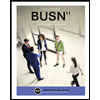
BUSN 11 Introduction to Business Student Edition
Business
ISBN:9781337407137
Author:Kelly
Publisher:Cengage Learning
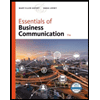
Essentials of Business Communication (MindTap Cou...
Business
ISBN:9781337386494
Author:Mary Ellen Guffey, Dana Loewy
Publisher:Cengage Learning

Accounting Information Systems (14th Edition)
Business
ISBN:9780134474021
Author:Marshall B. Romney, Paul J. Steinbart
Publisher:PEARSON
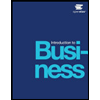
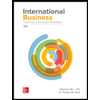
International Business: Competing in the Global M...
Business
ISBN:9781259929441
Author:Charles W. L. Hill Dr, G. Tomas M. Hult
Publisher:McGraw-Hill Education
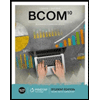
Recommended textbooks for you
 BUSN 11 Introduction to Business Student EditionBusinessISBN:9781337407137Author:KellyPublisher:Cengage Learning
BUSN 11 Introduction to Business Student EditionBusinessISBN:9781337407137Author:KellyPublisher:Cengage Learning Essentials of Business Communication (MindTap Cou...BusinessISBN:9781337386494Author:Mary Ellen Guffey, Dana LoewyPublisher:Cengage Learning
Essentials of Business Communication (MindTap Cou...BusinessISBN:9781337386494Author:Mary Ellen Guffey, Dana LoewyPublisher:Cengage Learning Accounting Information Systems (14th Edition)BusinessISBN:9780134474021Author:Marshall B. Romney, Paul J. SteinbartPublisher:PEARSON
Accounting Information Systems (14th Edition)BusinessISBN:9780134474021Author:Marshall B. Romney, Paul J. SteinbartPublisher:PEARSON
 International Business: Competing in the Global M...BusinessISBN:9781259929441Author:Charles W. L. Hill Dr, G. Tomas M. HultPublisher:McGraw-Hill Education
International Business: Competing in the Global M...BusinessISBN:9781259929441Author:Charles W. L. Hill Dr, G. Tomas M. HultPublisher:McGraw-Hill Education

BUSN 11 Introduction to Business Student Edition
Business
ISBN:9781337407137
Author:Kelly
Publisher:Cengage Learning

Essentials of Business Communication (MindTap Cou...
Business
ISBN:9781337386494
Author:Mary Ellen Guffey, Dana Loewy
Publisher:Cengage Learning

Accounting Information Systems (14th Edition)
Business
ISBN:9780134474021
Author:Marshall B. Romney, Paul J. Steinbart
Publisher:PEARSON


International Business: Competing in the Global M...
Business
ISBN:9781259929441
Author:Charles W. L. Hill Dr, G. Tomas M. Hult
Publisher:McGraw-Hill Education
